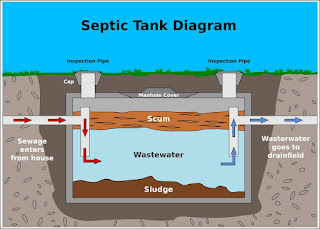Unveiling the Origins of the Term: Decoding the "Septic System"
In the world of wastewater management and plumbing, the term "septic system" has become synonymous with efficient and decentralized sewage treatment. But have you ever wondered why it's called a "septic" system? What does the name signify, and how does it encapsulate the intricate workings of this vital infrastructure? In this article, we embark on a journey through history to uncover the origins of the term "septic system" and explore its relevance in modern times.
Etymology and Historical Context:
The term "septic" is derived from the Latin word "septicus," which means putrefying or decaying. This etymological root provides a clue to the core function of a septic system: the decomposition and treatment of organic matter within wastewater. The concept of decentralized sewage treatment has a long history, with rudimentary versions dating back to ancient civilizations.
A Glimpse into the Past:
Before the advent of modern plumbing and centralized sewage systems, communities faced the challenge of managing human waste. In ancient times, various methods were employed to deal with sewage, ranging from open-air cesspools to rudimentary drainage systems.
As societies evolved, so did the methods of sewage management. In medieval Europe, for instance, the concept of "night soil" collection emerged, where human waste was collected from urban areas and transported to rural fields for use as fertilizer. However, these methods often led to unsanitary conditions and the spread of diseases.
Birth of the Modern Septic System:
The modern septic service system as we know it today began to take shape in the late 19th and early 20th centuries. It was a response to the growing need for effective and sanitary sewage treatment in areas lacking access to centralized sewer systems. The term "septic tank" was coined to describe a watertight container designed to facilitate the anaerobic digestion of sewage, separating solids from liquids and allowing for partial decomposition.
The introduction of the septic tank marked a significant advancement in wastewater management. It provided a self-contained and efficient means of treating sewage on-site, reducing the risk of waterborne diseases and pollution.
Relevance and Significance Today:
The term "septic system" has endured over the years due to its accuracy in describing the core function of the infrastructure. In a septic system, organic matter undergoes decomposition through natural bacterial processes, transforming it into harmless gases, liquids, and solids. This decomposition mirrors the concept of putrefaction or decay, which the term "septic" encapsulates.
Today, septic systems remain a vital component of wastewater management, especially in rural and suburban areas where centralized sewer systems are impractical or unavailable. They continue to provide an effective, decentralized, and environmentally friendly solution for treating household sewage.
Conclusion: The Legacy of the "Septic System":
The term "septic system" carries with it a rich history and a legacy of innovation in sewage treatment. It reflects the evolution of human ingenuity in addressing the challenges of waste management while striving for improved sanitation and public health. While the name itself might seem straightforward, its etymological roots reveal a deep connection to the fundamental principles of decomposition, treatment, and environmental responsibility. As we navigate the complexities of modern infrastructure and sustainable living, the term "septic system" serves as a reminder of our ability to find ingenious solutions to age-old challenges, ultimately shaping a cleaner and healthier future for communities around the world.


.jpeg)

Comments
Post a Comment